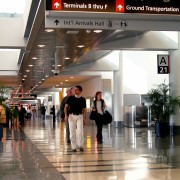No more zone tax offset for FIFOs
In the 2015-16 federal budget, the government announced that it will exclude “fly-in-fly-out” and “drive-in-drive-out” workers from claiming the zone tax offset (ZTO) where their normal residence is not within a “zone” (access the Australian zone list here).
The measure was not passed by Parliament until late in 2015, but it is now law, effective from July 1, 2015. Anyone who may have looked at making a claim under the ZTO next tax time may need to review their eligibility. Contact us if you would like assistance.
Why has the zone tax offset changed?
Until recently, to be eligible for the ZTO a taxpayer must have resided or worked in a specified remote area for more than 183 days in an income year.
But according to the government, it was estimated that around 20% of all claimants did not actually live full-time in the zones, and so did not face the same challenges of remote living that the ZTO was designed to address — such as the isolation, uncongenial climate and high cost of living associated with living in identified locations.
Still available
The offset will still be available to taxpayers who have taken up genuine residence within prescribed zones. The Tax Office said that existing instructions will still apply to work out how much you can claim.
To explain how the new regime will work, some examples from the Tax Office have been adapted below.
Examples
Adelaide to Alice
Andy is an engineer who lives in Adelaide. He flies to Alice Springs for 12 day shifts at an engineering firm and then travels back to Adelaide for his days off (which vary between four and eight days in a row). As Andy does not have his usual place of residence within a prescribed zone, even though he is in Alice Springs for 183 days or more, he is unable to claim the ZTO.
Darwin to WA
Jay is also an engineer but lives in Darwin (located within “zone A”) and travels to Kununurra in Western Australia (located in a zone A special area) where he is employed in the mining industry. In his usual shift, Jay drives to Kununurra, works 14 days at the mine, and drives back to Darwin where he remains for 16 days. Jay is still able to claim the ZTO as his usual place of residence is in Darwin, but he cannot access the special area zone A offset.
Is there an alternative concession?
Taxpayers who are required to live away from their usual place of residence because of employment duties might be eligible for the “living away from home allowance”. Ask us for more information.













